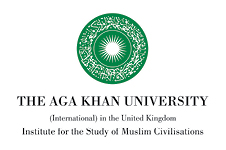The Maldives

The Coral Mosques of the Maldives Project
The Coral stone mosques of Maldives are a series of culturally and architecturally unique sites. The mosques are assembled from porite coral stone (hirigaa) hewn from the reef, and with their combination of carved coral stone and timber lacquer work represent a cultural fusion found nowhere else in the world. The surviving mosques distributed throughout the country are the last of their kind and have become monuments of outstanding value that need to be protected for the future.
Built mainly in the seventeenth century, the coral stone mosques of the Maldives are architecturally unique, combing local and regional influences to create a synthesis that reflects the country's position at the crossroads of trade routes in the Indian Ocean. The structures incorporate traces of ancient Hindu architecture from South India, Islamic motifs from Gujarat and the Malabar Coast, features from Buddhist and Hindu temples in Sri Lanka, decorative influences from Thailand and Myanmar, and the mosque design in East Africa.
The Maldivian mosques have never been excavated and the project provided the first opportunity to uncover their history. According to oral tradition, Maldivians converted to Islam in 1153 leading to the architecture of some Buddhist shrines being adapted. The project aimed to explain the chronology and the history of the coral mosques, and to bring new scientific evidence to help assess whether the monuments can be included on the UNESCO World Heritage List. The project included a field school to train the Maldivian Heritage Department in Islamic archaeology in partnership with the Maldivian defence forces.
Professor Pradines, project leader explains the excavation mission and its findings.
"During our first mission, in November 2017, we carried out archaeological excavations and surveys as well as collected oral traditions on two sites, the Fandiyaaru Mosque and Koagannu Cemetery in Hulhumeeddhoo town on Addu Atoll and the Friday Mosque of Fenfushi on Alifu Dhaalu Atoll. Two outcomes were expected from our mission; first, to provide new scientific data on the coral mosques of the Maldives to improve the chances of success of nomination of the mosques on the World Heritage List of UNESCO. Then to support the conservation project of the Maldivian government and international organisations such as UNESCO and the World Monuments Fund (WMF). One major question during our excavation was the continuity of the settlements from pre-Islamic cultures and influences from Buddhist architecture on local Islamic architecture. Some test sites were dug in the Great Mosque in Malé by our colleague Mauro of Jameel and he did not find any evidence of previous pre-Islamic buildings. The Maldivian mosques have been strongly influenced by Buddhist architecture; however, according to our excavations, even though some of them might have been reused some building material from previous pre-Islamic structures, the Maldivian mosques were not built on Buddhist temples. The coral stone mosques of the Maldives simply demonstrate a strong influence and continuity of Buddhist architecture on the local Islamic architecture."


